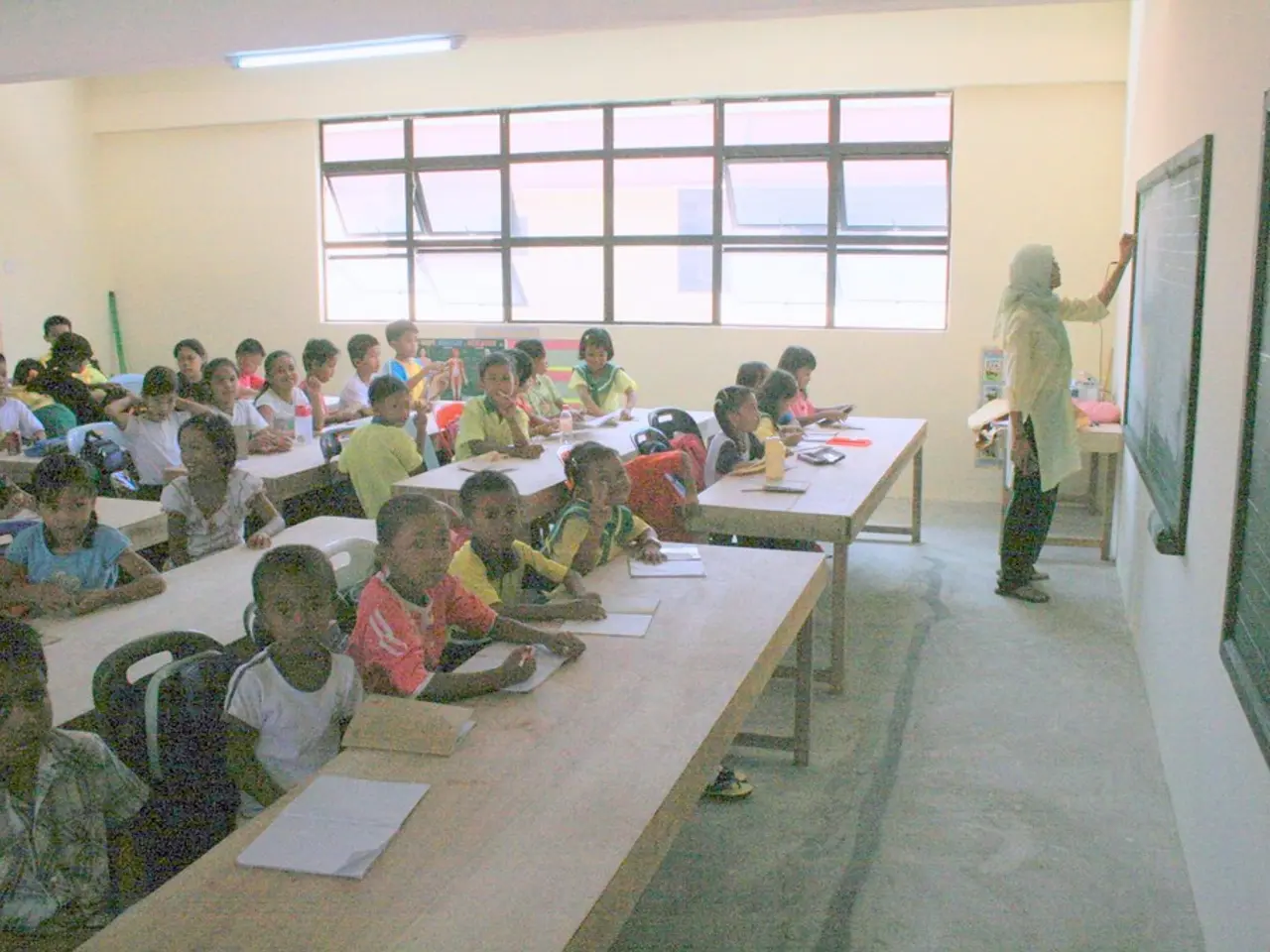Guide on Enhancing Educators' Capabilities with Practical Artificial Intelligence Applications
In the bustling city of New York, the topic of leveraging Artificial Intelligence (AI) in educational settings was presented at the NYC Tech Summit 2025. This discussion, led by esteemed figures such as Dr. Andy Szeto and Maximillian Re-Sugiura, emphasised the potential benefits of AI while addressing concerns about data privacy and ethical use.
Dr. Szeto, the Academic Policy, Performance, and Assessment Lead for the NYC Department of Education, underscored the importance of understanding both the capabilities and limitations of AI tools. He also addressed the prevalent fearmongering about AI in educational settings, urging a more balanced and informed approach.
Brett Roer, CEO and Founder of Amplify and Elevate Innovation, suggested introducing AI into a teacher's professional life by identifying general problems first. Roer emphasised that implementing an AI solution can help recover significant time for other endeavours, improving work-life balance.
One key strategy is the use of adaptive AI tools, such as intelligent tutoring systems and automated feedback. These tools tailor instruction to individual student needs, helping teachers identify learning gaps and deliver targeted interventions in real time, thereby reducing workload and increasing teaching effectiveness.
Providing options for transparency and ethics is another crucial aspect. This can be achieved by allowing students to complete assignments with or without AI assistance and educating both teachers and students on ethical use, equity, and pedagogy around AI integration.
Building a collaborative AI learning culture among educators is also essential. This can be achieved through peer-led innovation days, ongoing communication channels, and collaborative assessments, which supports practical adoption without overburdening teachers.
Delivering professional development over time, with ongoing training, peer support, and embedded experimentation time, ensures teachers can comfortably incorporate AI tools before deploying them with students.
Establishing clear policies and leadership alignment that address data privacy, acceptable use, bias detection, and compliance with COPPA (Children’s Online Privacy Protection Act) and FERPA (Family Educational Rights and Privacy Act) is vital. This gives teachers confidence that student data is protected.
Selecting AI tools compliant with privacy laws is another crucial step. Platforms like Gimkit, which adhere to FERPA and COPPA requirements to maintain student data privacy, serve as examples.
Monitoring and evaluating the implementation of these AI tools systematically through qualitative and quantitative metrics over several years ensures the tools improve outcomes and efficiency without compromising privacy or pedagogy.
Maximillian Re-Sugiura, principal of High School of Art and Design in New York City, advocates for a self-audit to identify time-consuming tasks that can be automated using AI. He also stresses the need to be aware of state and district AI policies and guidelines before implementing AI, and the importance of having an open dialogue with state municipalities and district leadership about AI implementation.
In conclusion, the strategic and thoughtful implementation of AI in educational settings can significantly improve teacher efficiency and work-life balance, while safeguarding student data under COPPA and FERPA standards. It's crucial to approach AI with a balanced understanding of its capabilities and limitations, and to properly vet AI solutions before attaching them to specific problems in a school or district.
- Incorporating technology like AI into the curriculum may enhance learning by providing adaptive tools that cater to individual student needs, enable teachers to identify learning gaps, and deliver targeted interventions, thus increasing teaching effectiveness.
- To ensure ethical use of AI in education-and-self-development, it's essential to offer choices for transparency, such as allowing students to complete assignments with or without AI assistance, and to educate both teachers and students on the appropriate use of such tools.
- By establishing a collaborative learning culture among educators, through initiatives like peer-led innovation days, ongoing communication channels, and collaborative assessments, teachers can support practical adoption of AI while avoiding overburdening.
- To maintain student data privacy while implementing AI tools, it's necessary to establish clear policies, ensure compliance with acts like COPPA and FERPA, and select platforms that respect these privacy standards, such as Gimkit.




